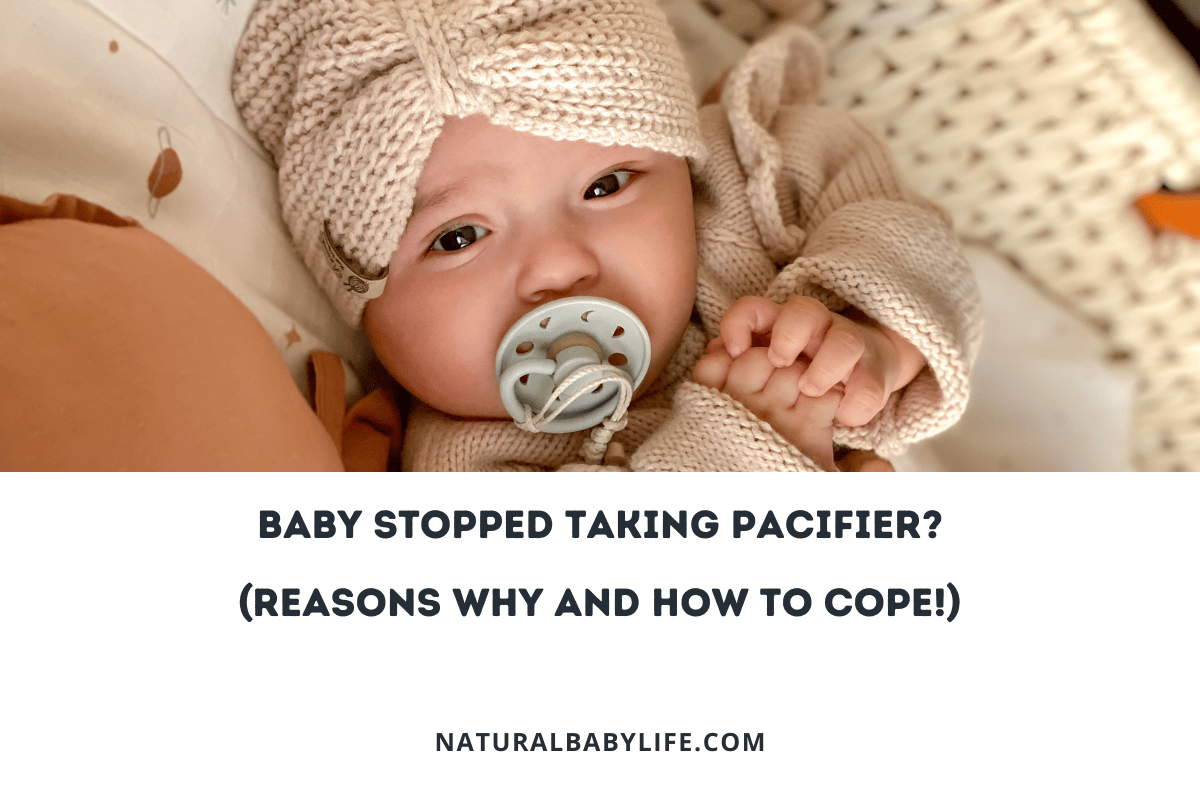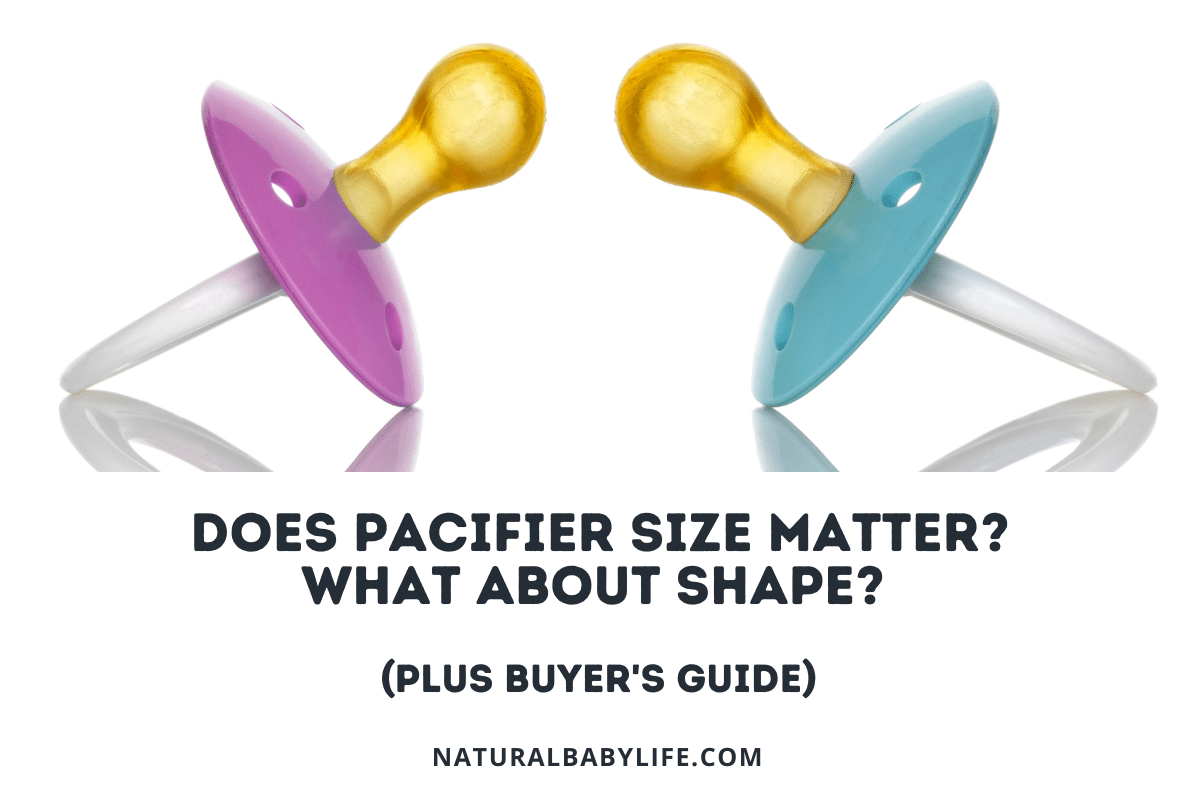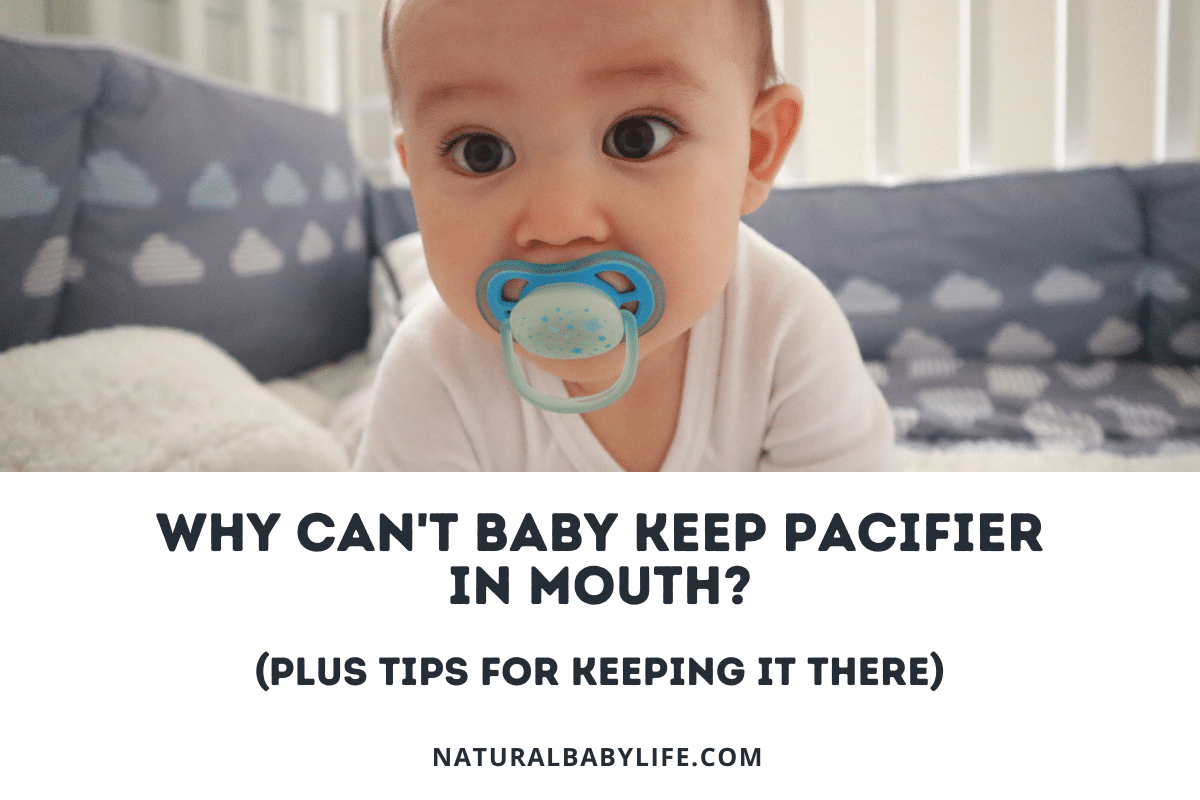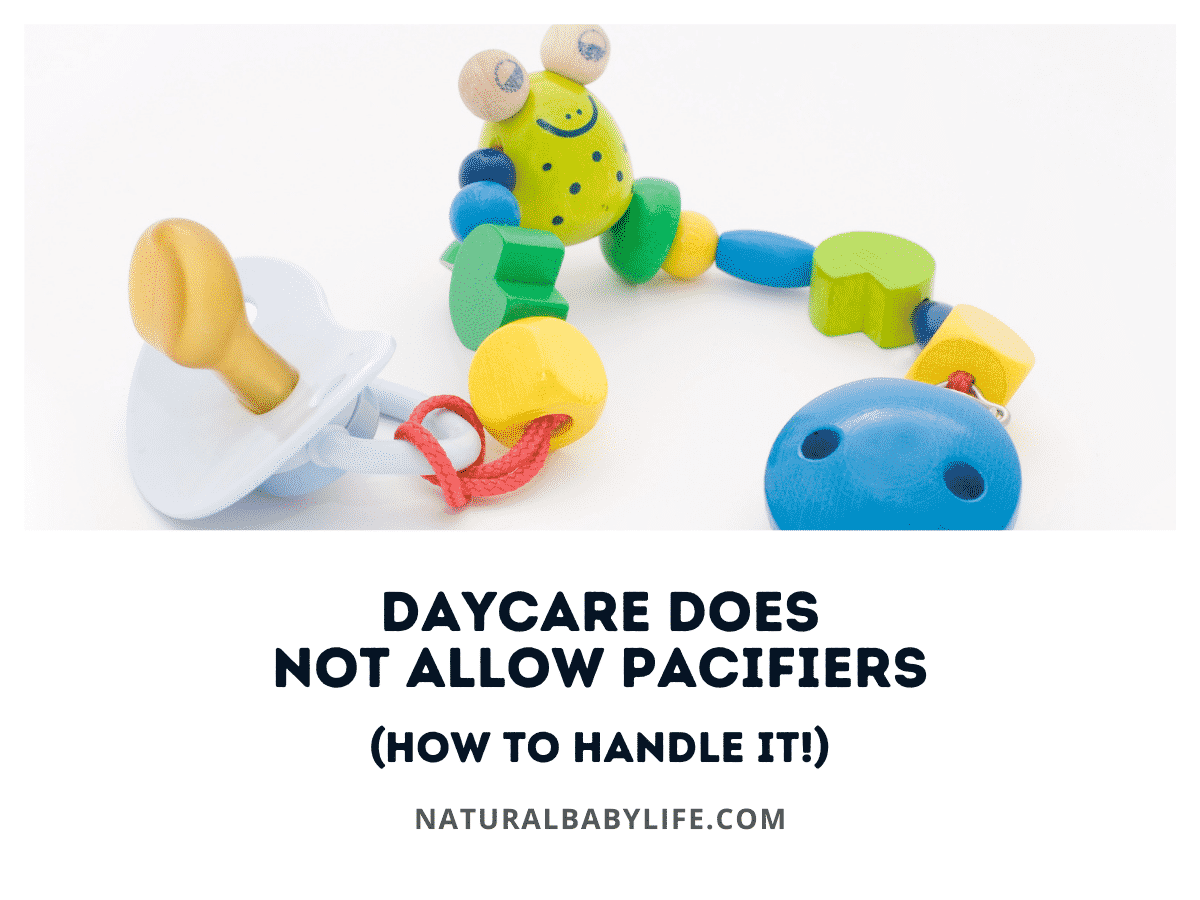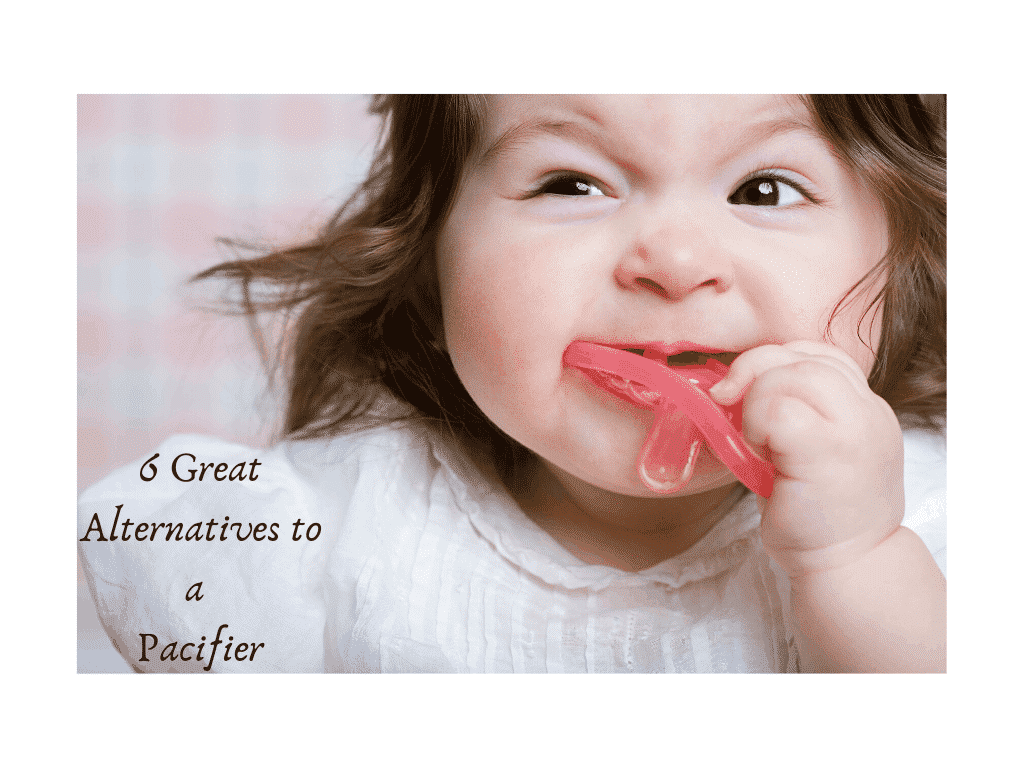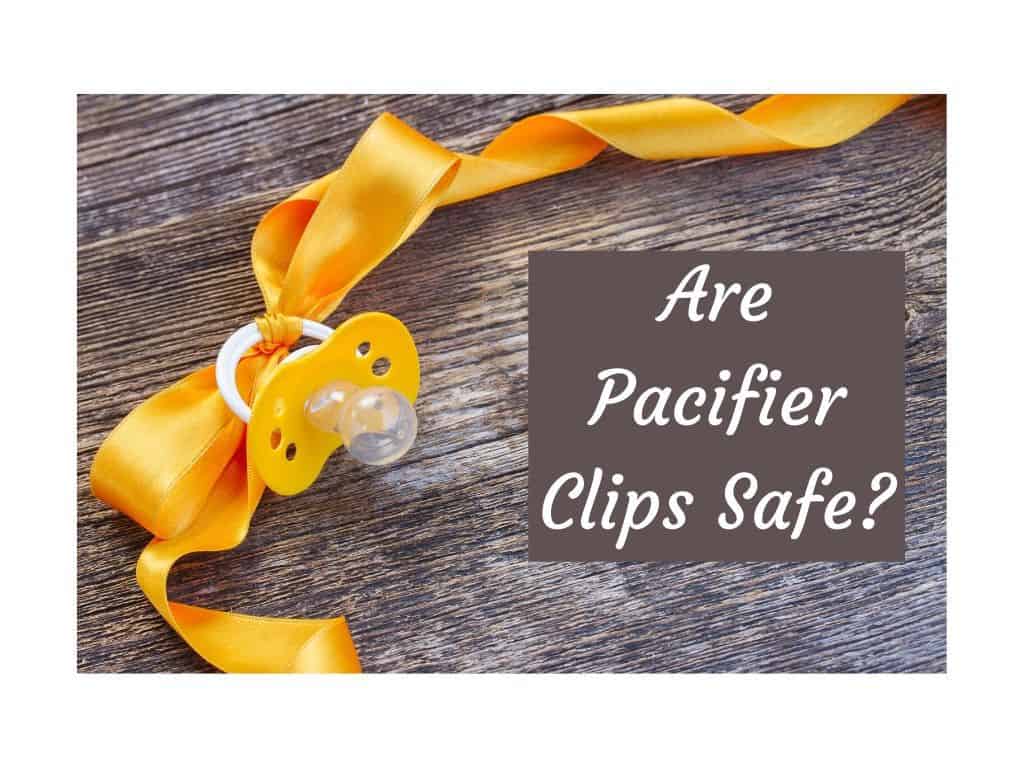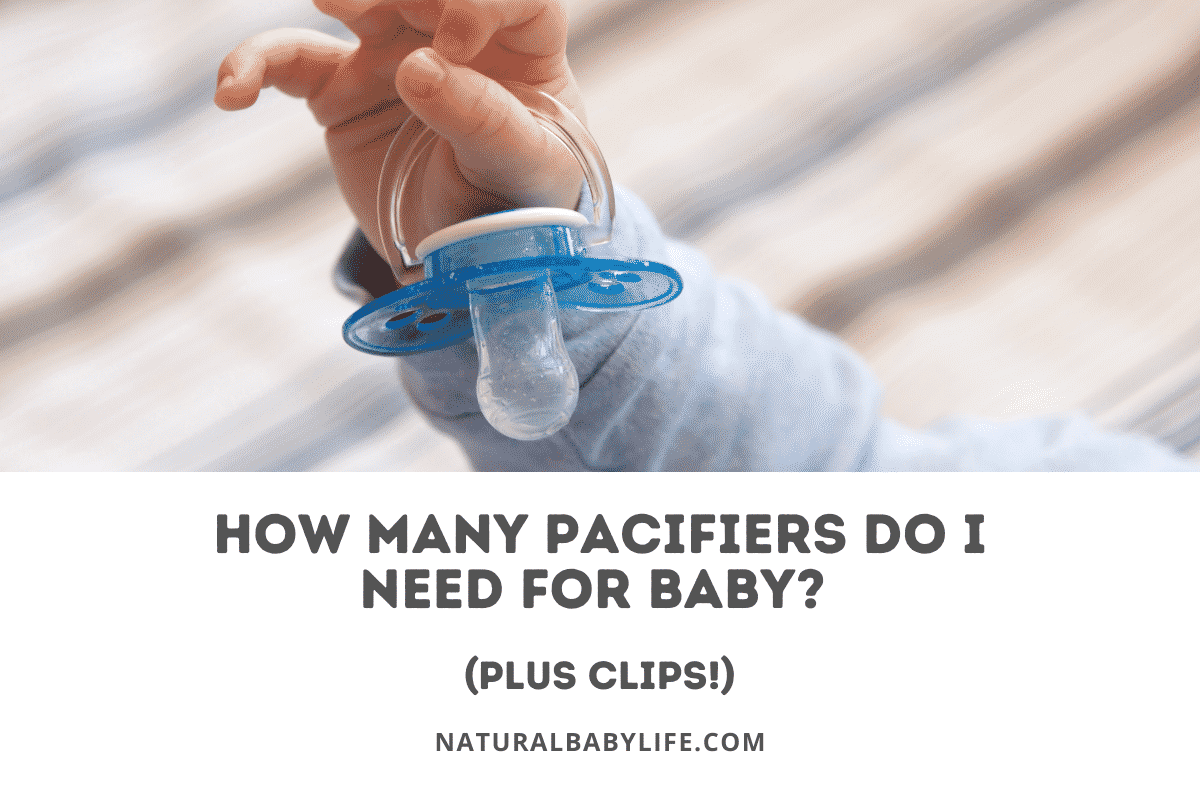If your baby has suddenly stopped taking her pacifier or doesn’t want to take one at all then it can be quite frustrating to deal with as a parent. Since most babies have a hard time learning to self-soothe, pacifiers can be used to help calm your baby more easily. But what do you do if your infant suddenly decides they do not want their binky anymore?
Many babies suddenly stop taking their pacifier or won’t take one at all because they prefer the breast, the pacifier is the wrong size or shape, or it’s given when the baby is upset. If your baby resists the pacifier, give it to her when she’s calm and ensure that the style is comfortable for her.
Read on to discover why your baby may or may not prefer the “pacie,” as well as how to encourage this nonnutritive sucking.
Table of Contents
Why Do Babies Stop Taking Pacifiers?
Every baby is different.
Doctors tell you this from the second a mother gets pregnant. So, naturally, one child’s reason for rejecting a pacifier will differ from another’s. That’s why it is crucial for parents to pay attention to their baby’s cues. Your baby may be telling you something important through their cries or rejections of the binky.
For instance, some babies will have trouble latching onto a pacifier correctly, and thus will not be able to be soothed by it. Other babies may simply prefer the pacifier some days over others, or only want to take a pacifier to help them fall asleep.
Giving a pacifier to your baby is completely optional. So if your baby doesn’t want it, you don’t have to force it. Over time, babies will eventually transition from them, anyway. This is great for a toddler, as prolonged pacifier use could contribute to dental issues after a certain age.
However, if you have a young infant, you may want to hold on to that pacifier for a while when there are few other ways to soothe them.
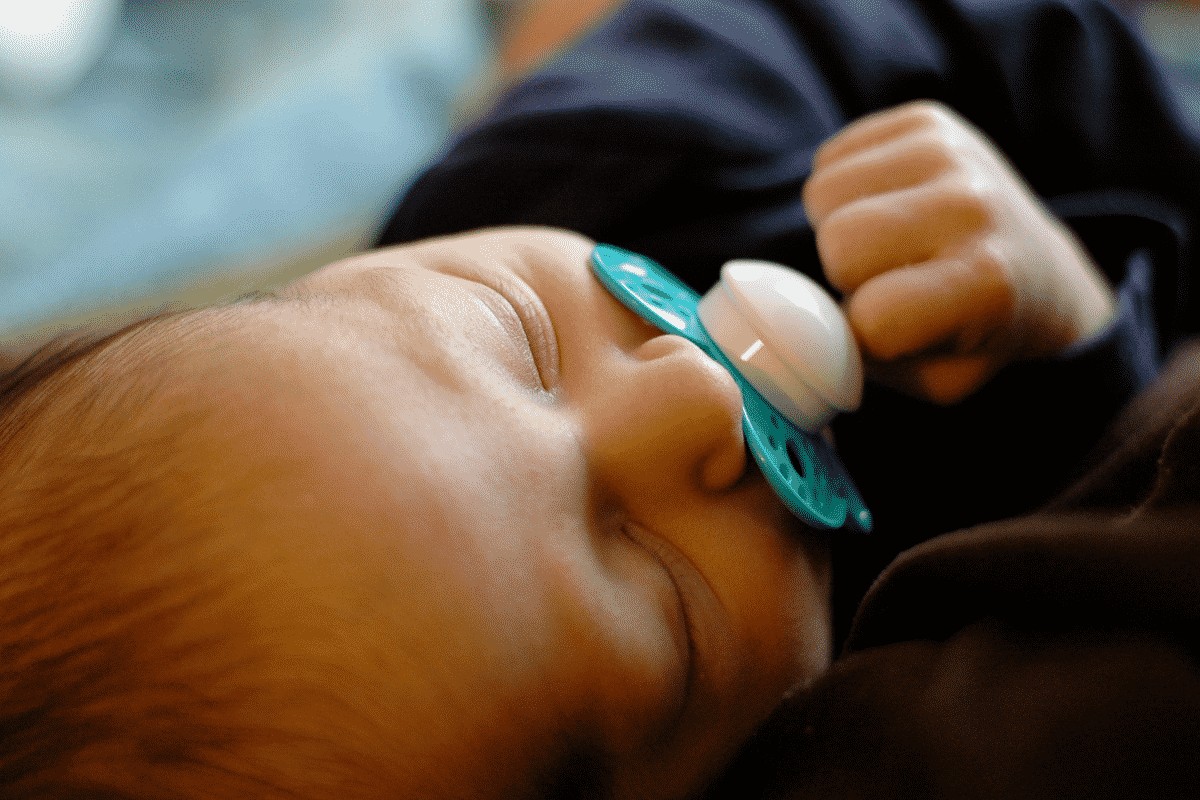
Why do pacifiers work in the first place?
In the womb, it was easy for babies to suck on their fingers or toes in order to soothe themselves. After a baby is born, sucking becomes one of the five womb sensations that help calm babies—it can lower the heart rate and reduce stress levels in infants.
Babies use pacifiers for nonnutritive sucking, which is an action that’s not associated with satisfying hunger. In addition to thumb sucking, the use of a pacifier can remind babies of the comfort of their mother’s womb. And, because pacifiers are small enough for the baby’s hands, it can help with a child’s self-soothing.
What if baby refuses the pacifier and wants your breast instead?
Breastfeeding is a treasured bonding activity between babies and their mothers. That is why it can be especially difficult for an infant to part from the warm embrace of a feeding session with mom and take a pacifier instead. This comfort often cannot be matched.
Breastfed babies may also have trouble taking a pacifier because they are used to opening their mouths wide for their mother’s breast. It takes careful concentration to latch on. So, when offered a pacifier, your breastfed baby may be tempted to open wide and put the whole pacifier in their mouth. This can, of course, result in a frustrating and uncomfortable experience for your baby.
Fortunately, you can use a few tactics listed below to reintroduce a pacifier to your baby. But specifically for breastfeeding moms, try this after a feeding: When your baby stops feeding for milk, slowly remove your breast from their mouth and replace it with a pacifier. Because baby is already satisfied from your breastmilk and relaxed, he or she may have a better time keeping the binky in their mouth.
You can also try a pacifier that is specifically designed to be the same shape and feel of a real nipple to help your baby transition as easily as possible. The Tommee Tippee Closer to Nature “breast-like” pacifier is highly reviewed and has helped many parents that are struggling with this issue.
You can find them right here.
And, here is the super cool glow-in-the-dark night version!
- BREAST-LIKE: Inspired by our award-winning Closer to Nature nipple, this soft silicone binky flexes and stretches just like mom, providing breast-like comfort for the most natural soothing experience
- GLOWS IN THE DARK
- HELPS WITH TRANSITION
- SYMMETRICAL ORTHODONTIC DESIGN
- KIND ON BABY’S SKIN
Prices pulled from the Amazon Product Advertising API on:
Product prices and availability are accurate as of the date/time indicated and are subject to change. Any price and availability information displayed on [relevant Amazon Site(s), as applicable] at the time of purchase will apply to the purchase of this product.
Still, some babies who breastfeed simply don’t prefer the pacifier, which is perfectly normal.
Is your baby not taking a new pacifier?
Like milk bottles, pacifiers also come in different shapes and sizes.
If your baby isn’t taking the pacifier, consider the type of pacifier you’re giving your infant. Did you recently switch binkies, and your baby is just not used to the new style?
First, there are various options for pacifier sizes based on your infant’s age. You can also choose from different shapes and materials. Your child may have a preference for one over the other, as they’ll all feel different in their mouths.
Also, consider rubber vs. silicone or orthodontic vs. bell shapes. It’s always a good idea to ask for a recommendation from your child’s pediatrician.
How Can I Get My Baby to Take a Pacifier Again?
Despite some disagreements among parents and pediatricians, pacifiers are perfectly fine to give your infant when used correctly. They are great soothers, but they also have great health benefits like potentially helping to reduce the risk of SIDS. But what do you do if your baby stops taking the pacifier?
The first step is to find an opportunity in which your baby still has the desire to suck even after finishing a feeding. If your baby finishes a bottle and continues to suck even after their full meal is gone, offer the pacifier in exchange for the empty bottle.
Here are some more tips to reintroducing the pacifier to your child:
Introduce the pacifier at the right age
Make sure you’re introducing the pacifier at the right time.
If you’re breastfeeding, you want to establish a good latch with your baby before giving them a pacifier. If you introduce it too soon, this could cause nipple confusion or the baby to stop taking the breast. To establish your breastfeeding routine first, wait until your newborn is at least two to three weeks old before introducing a pacifier.
Offer the pacifier when baby is content
Be strategic about when you offer the pacifier.
You can get better results when you work with baby while he or she is content. Try offering the pacie as soon as the baby finishes eating or when baby is ready for bed. Sucking on the pacifier can help them doze off to sleep more quickly.
Make the pacifier comfortable to take
Consider the status of the pacifier? Is it too cold or icky for your baby? Try heating it, cooling it, or putting milk droplets on it. When you make the temperature more comfortable for your baby, he or she may be more willing to hold onto it.
Also, putting milk on the pacifier can make it more enticing. Milk will have a familiar taste and smell, making the baby more likely to be interested in it.
Avoid putting something like honey or another super-sweet substance on the pacifier, however, because it will not be good for your baby’s nutrition and could cause them to become reliant on the sweetness to take their pacifier.
Bring baby’s attention to the pacifier
Tap the binky on your baby’s tongue or stroke the baby’s nose with it. This will grab your baby’s attention and potentially invite them to latch onto it.
Then, when your baby does take the pacifier, gently tug on it just a little. This gives the baby a little resistance, and can eventually teach your child to strengthen their grip of the pacifier and keep it in their mouth.
How to Soothe a Baby That Won’t Take a Pacifier
If your baby was never interested in a pacifier, don’t worry! There are plenty of other ways to soothe a crying or upset baby.
Check out some of these baby soothing tips:
- Hold your baby in the “Colic Carry” position: Lay the baby tummy-down on your forearm, holding their head safely in your hand. Then, gently rub or pat their back. This position can help relieve gas and quickly soothe an upset infant.
- Give baby a warm bath and follow-up with a relaxing massage.
- Swaddle your baby in a clean, warm blanket.
- Walk around with your baby in a carrier. Babies love being near your chest and hearing your heartbeat.
- Play calming music, relaxing sounds (ocean, womb noises. etc.) or sing to your baby.
- Keep a baby diary to track when your baby sleeps, eats, has a dirty diaper, and cries. This way, you can begin to understand your baby’s cues and build a routine.
When your baby is crying and you don’t know why, always consider baby’s daily needs.
Run down the checklist of basic baby necessities to find a remedy for your baby’s tears:
- Is baby hungry?
- Does baby have a dirty diaper?
- Does baby have gas?
- Is baby too hot or cold?
- Is baby bored or overstimulated?
- Is baby tired?
- Is baby sick?
How do you deal with a pacifier withdrawal?
If your baby was once comforted by a pacifier but is no longer interested, the withdrawal process may be tricky.
Start by finding something to replace the pacifier like a comforting blanket. Also, encourage self-soothing techniques like thumb-sucking or try the other soothing methods mentioned above.
All babies will have to go through this process eventually, but it can make things extra stressful for both the baby and the parents during the transition. Expect for your baby to cry more often, have trouble getting to and staying asleep, and generally being more irritable.
Should I force my baby to take a pacifier?
If your baby simply does not want the pacifier, let it be. You never want to force your baby to do anything he or she tells you they don’t want to do. Read your baby’s cues and listen to his or her preferences.
If you can find other ways to soothe your baby without a pacifier, consider it a bonus!

